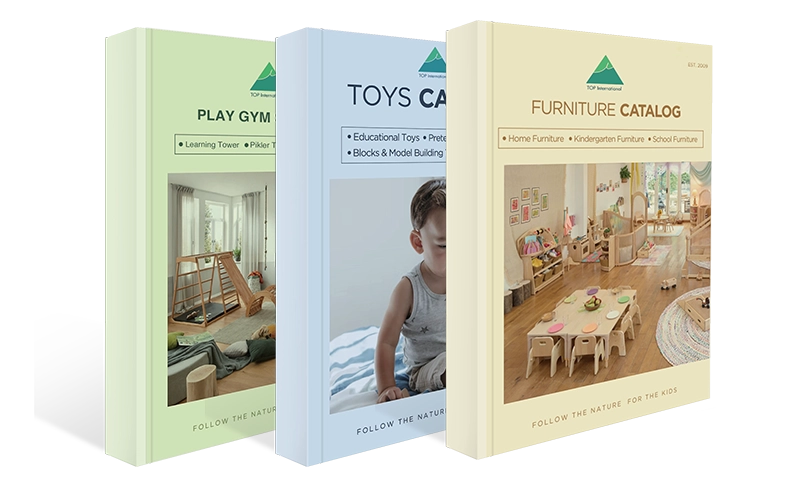Are you seeking an educational method that empowers children to learn independently, fostering curiosity and responsibility? The Montessori Method is among the world’s most celebrated child-centered educational approaches. But what makes it stand out, and how does it work?
The Montessori Method is more than just a teaching style—it’s a philosophy that prioritizes self-directed learning, hands-on activities, and respect for the individual child. Rooted in the belief that children learn best through exploration, the method encourages educators to guide rather than dictate, allowing children to flourish at their own pace in an environment that stimulates curiosity and growth.
This article will explore the history, principles, benefits, and challenges of the Montessori Method to help you understand why it continues to revolutionize early education.
1. What is the Montessori Method?
The Montessori Method is an educational approach based on the belief that children are naturally curious and capable of self-guided learning. Developed by Dr. Maria Montessori in the early 1900s, this method emphasizes independence, respect, and exploration. It encourages children to take responsibility for their learning, choose activities that interest them, and work at their own pace. The environment is carefully prepared to stimulate curiosity, with age-appropriate materials and the Montessori Method designed to encourage hands-on learning.
This method fosters a deeper understanding of concepts through tactile, interactive experiences. Children are not confined to rigid lessons or grades; instead, they engage in activities that match their developmental stage and individual interests, making the Montessori Method highly adaptable to children’s unique learning styles.
By focusing on independence, self-regulation, and critical thinking, the Montessori Method nurtures the development of well-rounded, self-motivated learners. This approach supports cognitive development and emotional and social growth, making it a genuinely holistic child development philosophy.

2. Who Was Maria Montessori?

Dr. Maria Montessori, an Italian physician, founded the Montessori Method. Born in 1870, she became the first woman to graduate from medical school in Italy. She initially worked with children with disabilities and soon realized that traditional education methods did not meet the needs of all children. This led her to develop her educational approach based on her observations of children’s behavior, needs, and developmental stages, mainly focusing on the sensitive period in the Montessori method, when children are most receptive to learning specific skills.
Montessori’s belief that children could learn independently if given the right tools and environment led to the creation of the first Montessori school in 1907, Casa dei Bambini (Children’s House). This school became the foundation for the Montessori Method research and its development into a worldwide educational approach.
Her work has profoundly impacted education worldwide, and Montessori’s approach is still widely used today. It provides children with a unique and empowering educational experience. The Montessori Method, created by Maria Montessori, is still the backbone of modern education practices, influencing schools, curricula, and homes globally.
3. Montessori Method History
The Montessori Method, widely regarded as one of the most innovative and influential approaches to early childhood education, has a rich history that dates back over a century. It was developed by Dr. Maria Montessori, an Italian physician and educator, who observed and pioneered a revolutionary way of teaching children. The roots of the Montessori Method lie in her passion for understanding child development and her desire to create a learning environment that truly respects each child as an individual.
3.1 The Early Years: Maria Montessori’s Beginnings
Maria Montessori’s journey into education began in the late 19th century. Initially trained as a physician, Montessori was one of the first women in Italy to earn a medical degree. Her interest in education arose from her work with children, particularly those with learning disabilities. In 1907, Montessori opened the first Casa dei Bambini, or “Children’s House,” in the San Lorenzo district of Rome. This school catered to children from low-income families, many of whom had previously been deprived of quality education.
At the Casa dei Bambini, Montessori introduced her pioneering educational ideas. Unlike traditional education methods, which focused on rigid instruction and passive learning, the Montessori Method created an environment that encouraged children to explore, discover, and learn at their own pace. She developed a set of didactic materials in the Montessori Method, which allowed children to engage their senses and understand abstract concepts through physical interaction. These materials helped children concretely grasp complex ideas, promoting both cognitive and sensory development.

3.2 The Development of Montessori’s Philosophy
As Montessori observed her students’ progress, she better understood how children learn. She recognized that children have an inherent drive to learn, and external pressures should not dictate their learning but be guided through exploration and self-discovery. This idea was revolutionary, as most educational systems focused on teacher-directed lessons and memorization.
Montessori’s approach was grounded in a scientific understanding of child development, influenced by her studies in psychology and pedagogy. One key concept that emerged from her research was the sensitive period in the Montessori Method, a crucial time when children are particularly receptive to certain types of learning. Understanding these sensitive periods allowed Montessori to design environments and activities that met children’s developmental needs at the right time.
The Montessori Method philosophy emphasizes respect for the child, with an environment encouraging independence, exploration, and responsibility. This approach fosters critical thinking and allows children to develop a love of learning that stays with them throughout their lives.
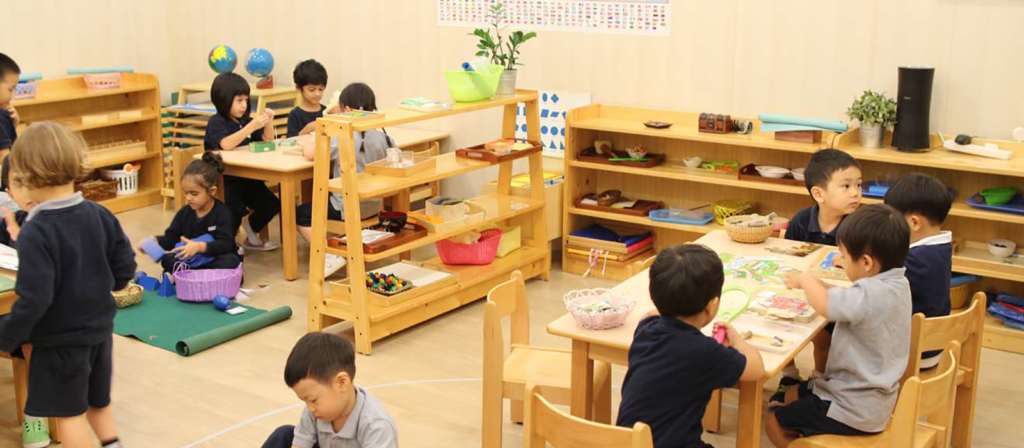
3.3 Expanding the Montessori Method Globally
After the success of the first Casa dei Bambini, Montessori’s ideas quickly spread across Italy and beyond. In 1911, the first international Montessori conference was held in Italy, marking the beginning of the global spread of her educational method. Montessori schools began opening in various countries, including the United States, where her work was further embraced and developed.
By the mid-20th century, the Montessori Method had gained widespread recognition, with schools and educational programs incorporating her principles worldwide. The method has also gained attention for its potential to support children with various learning needs, including those on the autism spectrum. In recent years, there has been growing interest in the Montessori Method and autism, with research suggesting that its focus on individualized learning and sensory activities may be particularly beneficial for children with autism.
Today, Montessori method research continues to explore its efficacy in various educational settings, comparing it with the Montessori and other teaching methods. The results consistently show that the Montessori approach promotes more extraordinary academic achievement, emotional development, and independence in children.
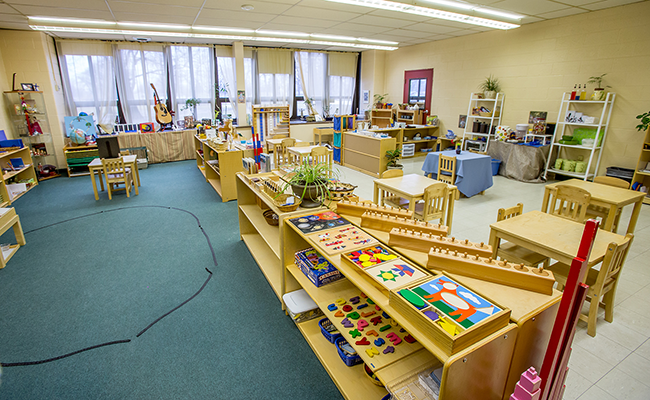

3.4 The Lasting Legacy of the Montessori Method
The Montessori Method has been praised for its unique features, such as its emphasis on practical life skills and sensorial activities, which help children build a strong foundation for learning. The method’s use of Montessori Method toys—carefully designed, hands-on learning materials—encourages problem-solving and creativity while nurturing a child’s natural curiosity.
What makes the Montessori Method unique is its timeless ability to adapt to the needs of children, regardless of culture or environment. Its success is a testament to the foresight of Maria Montessori, whose innovative approach to education continues to inspire educators, parents, and students worldwide. The materials Montessori Method has developed, and the principles it upholds, have proven that when children are given the tools to learn in a way that respects their natural development, they become lifelong learners, capable of navigating the world with confidence and curiosity.

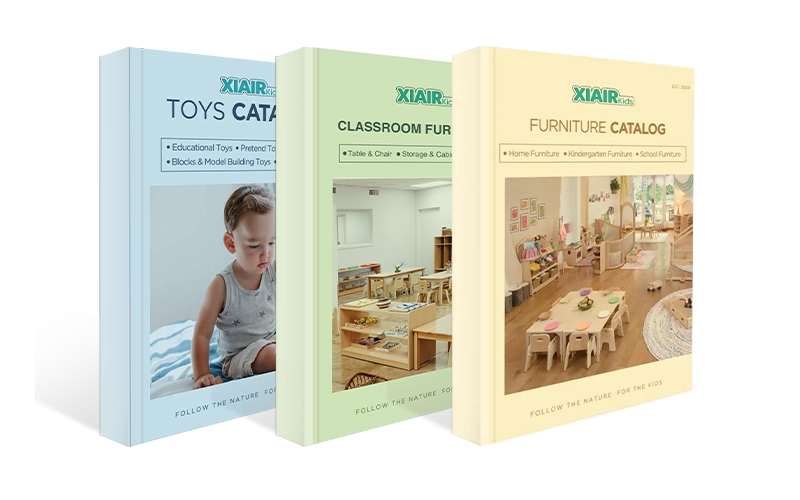
Receive a free catalog and custom layout to help you design your ideal classroom easily.
4. The Seven Principles of the Montessori Method
The method focuses on the child’s natural development and is grounded in seven core principles that guide the Montessori classroom. These principles promote a child-centered learning environment, where students can explore and learn at their own pace. Let’s explore the seven key principles that define the Montessori Method.
4.1 Respect for the Child
The first and most crucial principle is respect for the child. In Montessori classrooms, children are viewed as capable and independent individuals. Teachers act as guides, not directors. The method encourages giving children autonomy in their learning, allowing them to make choices, set their own pace, and develop a sense of responsibility for their education.
4.2 The Absorbent Mind
Montessori believed that children’s minds are incredibly absorbent, especially in the early years. During this time, children naturally absorb information from their environment without effort. The absorbent mind principle emphasizes providing a rich, engaging environment where children can freely learn and explore. It is during this sensitive period that their development is most malleable.
4.3 Sensitive Periods
In the Montessori Method, there are specific periods during childhood when children are particularly receptive to learning particular skills. These “sensitive periods” include language acquisition, motor development, and social skills. Montessori educators carefully observe each child to identify these periods and offer appropriate activities to support their natural development.
4.4 Prepared Environment
The prepared environment is central to the Montessori Method. This principle refers to creating an orderly, aesthetically pleasing environment with developmentally appropriate materials. The environment should encourage independence, exploration, and freedom of choice, allowing children to access materials and engage in activities at their own pace.
4.5 Hands-On Learning
Montessori education emphasizes hands-on learning. Children learn by interacting with tangible materials, which allow them to understand abstract concepts through direct experience. The method uses didactic materials in the Montessori Method—specially designed learning tools that help children discover mathematical, linguistic, and sensory concepts. These materials promote active learning and self-correction.
4.6 Independence
One of the core values of the Montessori Method is fostering independence. Children are encouraged to take responsibility for their learning and environment. From choosing activities to cleaning up after themselves, children are taught to be self-reliant and develop confidence in their decision-making ability. This principle empowers children and helps them grow into confident, capable individuals.
4.7 Intrinsic Motivation
Finally, the Montessori Method nurtures intrinsic motivation. Instead of relying on rewards and punishments, Montessori educators create an environment where children are motivated by their curiosity and love for learning. Children are encouraged to work at their own pace, and the joy of discovery becomes the primary driver for learning, rather than external validation.


Receive a free catalog and custom layout to help you design your ideal classroom easily.
5. Montessori Educational Practices
5.1 Birth to 6 years
Infant and Toddler Programs: Montessori classrooms offer classes for children younger than three years old, and various terms are used. A “Nido,” Italian for “nest,” serves children from about two to fourteen months old or able to walk. An “Infant Community” serves several children from one to two and a half or three years old. Both environments emphasize materials and activities appropriate to the child’s age and ability, as well as opportunities for the development of mobility and independence. Toileting is also emphasized. Some schools also offer “Parent-Infant” programs, where parents can attend with their children.
Preschool and kindergarten: Montessori classrooms for children aged two and a half or three to six are called children’s houses, after Montessori’s first school, Casa dei Bambini, in Rome in 1906. This level is also called “primary”. A typical classroom serves 20-30 children, placed in cross-age groups led by a senior (trained) teacher and an assistant. The classroom is usually equipped with tables and chairs suitable for the children’s size and is arranged individually or divided into small groups. The classroom is also filled with equipment and shelves ideal for the children’s height. The activities are initially led mainly by the teacher, and then they are more or less freely selected as “hosts” as their interests dictate. The equipment in the classroom (and often the activities) is for practical skills training, such as “pouring” and “scooping” materials for sensory development, including mathematical materials, language materials, music and art materials, and more.

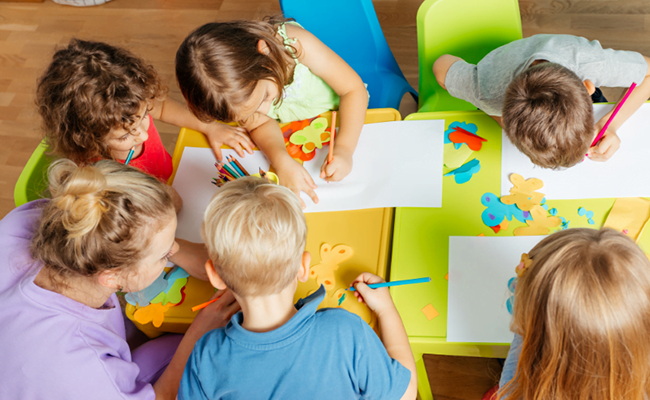
5.2 Ages 6 to 12
Elementary Classrooms: Classrooms for this age group are generally called “primary schools” and can range from one digit to more than 30 children. They are often led by a senior teacher and one or more assistants. Classrooms usually serve mixed-age groups ranging from 6-9 and 9-12, although 6-12 groups are also used. The curriculum is typically taught to small children, who can follow up on individual work (as dictated by personal interests and responsibilities). The scope of the curriculum and work in the primary school is vast. Montessori used the term cosmic education to indicate not only that the scope of the curriculum is celestial, but also that the educational philosophy of the second stage is to help children realize their human role in this interdependent and functioning universe. Classroom materials and curriculum include language, mathematics, history, science, art, and more. Student-led exploration of resources outside the classroom, which Montessori called “outings,” is integral to primary school teaching.

5.3 Ages 12 to 18
Middle and High School: Montessori education is less developed for this level than for younger children. Montessori did not establish a teacher training program or detailed plan for adolescents during her lifetime. However, many schools have expanded their programs to include middle and high school levels. In addition, some Montessori organizations have developed teacher training or orientation courses, and a loose consensus on the program is emerging. Montessori wrote:
One point of view from which our program must be reformed may be defined as follows: to take the children out of the accustomed family environment of the small town and into the country, closer to nature, during the difficult times of adolescence.


Receive a free catalog and custom layout to help you design your ideal classroom easily.
6. Montessori School Pros and Cons
Like any educational system, the Montessori Method has advantages and drawbacks. Let’s examine both sides to gain a comprehensive understanding.
Advantages
- Montessori Promotes Self-Paced, Independent Learning
One of the key strengths of the Montessori Method is its ability to encourage independence. Children are free to explore activities at their own pace, which promotes self-regulation and confidence in their abilities. - Montessori Strengthens Communication Skills
The Montessori Method emphasizes active communication. Children work in mixed-age groups, allowing for peer-to-peer interaction, which helps them build communication skills, social confidence, and empathy. - Montessori Fosters a Love for Learning
Since children can choose their activities and explore subjects that interest them, they naturally develop a love for learning. Montessori classrooms encourage curiosity, helping children develop a lifelong passion for education. - Montessori Supports Special Needs
The Montessori Method is highly adaptable and can be tailored to meet the needs of children with various learning differences. Its individualized approach ensures that each child can receive the support they need to succeed.
Shortcomings
- Montessori is Expensive
Due to the specialized materials and individualized instruction, Montessori schools often have higher tuition rates than traditional schools. This can make Montessori education less accessible for some families. - Montessori is Not Accessible to Everyone
While Montessori schools are widespread, they are not available everywhere. Families may not have easy access to Montessori programs in certain areas, particularly in underserved communities. - Montessori Can Be Inconsistent
The Montessori Method relies heavily on the teacher’s skill and understanding. If a teacher is not adequately trained in the Montessori approach, the quality of education may vary, leading to inconsistent experiences across schools. - Montessori Sacrifices Collaboration for Independence
While independence is central to the Montessori Method, critics argue that this emphasis may limit opportunities for collaboration. Some believe working in groups and developing teamwork skills could be more prominent in Montessori.
How to Discipline the Montessori Method?
Discipline in Montessori is approached differently than in traditional schools. Rather than relying on punishment, Montessori focuses on guiding children to understand the consequences of their actions and helping them develop self-discipline. Teachers act as observers, providing structure and support while allowing children to learn from their experiences.
The Montessori approach to discipline encourages respectful behavior, communication, and conflict resolution, fostering an environment where children learn to regulate their actions and emotions.
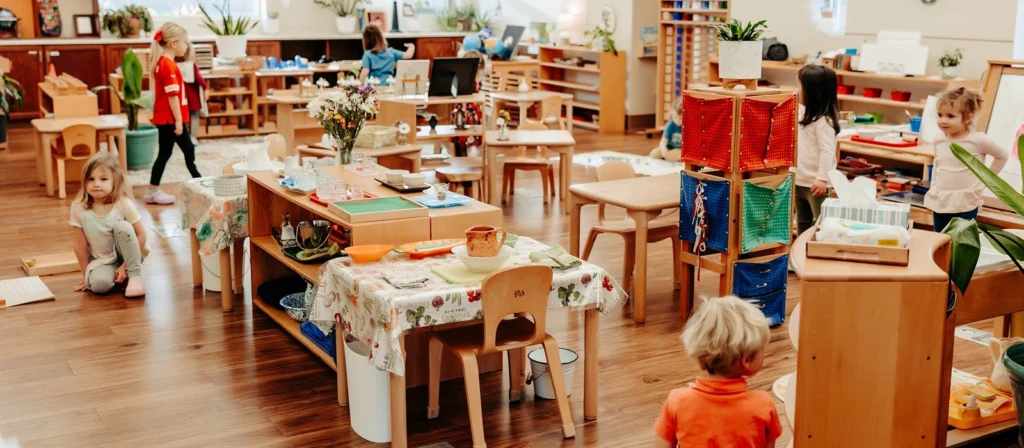
7. What are the Montessori Courses?
Montessori education covers various developmental stages, with tailored programs that suit the specific needs of each age group. The curriculum includes practical life skills, mathematics, language, science, and cultural studies.
7.1 How Each Program Differs for Each Grade Level
- Infant and Toddler (0 to 3 Years)
In this early stage, Montessori focuses on sensory development and motor skills. Children are encouraged to explore their surroundings and develop independence in basic activities like feeding and dressing. - Primary (3 to 6 Years)
The primary Montessori program introduces children to early literacy, numeracy, and practical life skills. Activities are hands-on, allowing children to engage with the material directly. - Elementary (Lower, 6 to 9 Years and Upper, 9 to 12 Years)
In elementary school, children continue to develop their academic skills while engaging in more complex subjects such as science, history, and geography. The emphasis is on critical thinking, collaboration, and independence. - Adolescence (12 to 15 Years)
The adolescent Montessori program focuses on community involvement and project-based learning. Students are encouraged to explore their interests while developing leadership and teamwork skills.
7.2 Montessori Method in Early Childhood Education
Montessori is well-suited for early childhood education, fostering independence, problem-solving, and social development. In Montessori early childhood classrooms, children engage with materials that help them develop cognitive, motor, and social skills in a nurturing environment.
The Montessori Method’s child-centered approach ensures that children actively participate in their learning, laying a strong foundation for future academic and personal success.
8. Montessori vs. Traditional Preschool Education
| Aspect | Montessori Education | Traditional Preschool Education |
|---|---|---|
| Learning Approach | Child-directed, self-paced | Teacher-directed, structured |
| Classroom Environment | Open, hands-on materials, organized | More conventional, less hands-on |
| Teacher’s Role | Guide, facilitator | Instructor, authority figure |
| Curriculum | Flexible, individualized learning | Standardized, one-size-fits-all |
| Focus | Holistic development (intellectual, social, emotional) | Focus on academic subjects |
| Collaboration | Mixed-age groupings, peer learning | Age-specific groups, less peer interaction |
9. Montessori Method: Practical Life
Practical life activities in Montessori education are essential for developing independence, coordination, and responsibility. These activities help children acquire everyday skills while learning to care for themselves and their environment.
- Montessori Methods for Self-Feeding
Children are encouraged to feed themselves using child-sized utensils, promoting independence and fine motor development. - Montessori Reading Method
Montessori encourages early literacy through phonetic methods. It allows children to recognize letters and sounds, fostering a love for reading. - Montessori Toy Method
Montessori toys are designed to be open-ended, allowing children to engage in creative play and learn through hands-on exploration. - Montessori Math Method
Montessori math materials, such as counting beads and geometric shapes, help children understand numbers and mathematical concepts through tactile interaction. - Montessori Potty Training Method
The Montessori potty training method encourages independence and self-awareness. Children learn at their own pace in a respectful and supportive environment.
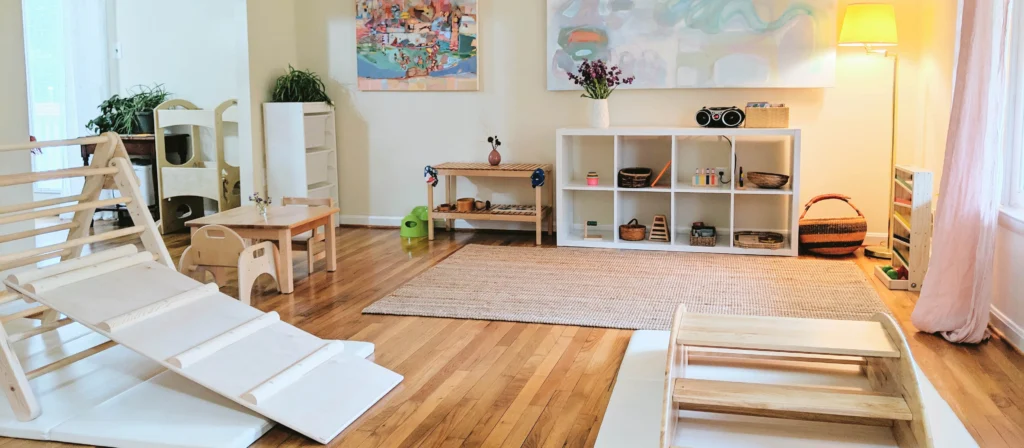
10. How to Apply the Montessori Method at Home?
Incorporating Montessori Basics at Home
The Montessori Method is rooted in self-directed learning and the understanding that children are naturally curious. To start incorporating Montessori principles at home, it’s essential to recognize the child’s inherent desire to explore and give them the tools and freedom to do so.
- Foster Independence: Encourage your child to perform daily tasks independently, such as dressing, feeding, and tidying up their space. Providing child-sized furniture, utensils, and tools helps children feel empowered to complete tasks independently. This fosters autonomy and supports the Montessori Method’s practical life skills development philosophy.
- Use Hands-On Activities: Sensorial activities are essential for learning in the Montessori method. Offer your child interactive and sensory-rich materials, such as Montessori-method toys, puzzles, building blocks, art supplies, and manipulable objects. These materials encourage exploration and learning through tactile experiences, aligning with the unique features of the Montessori method.
- Encourage Decision-Making: Give your child the freedom to choose what they want to do or learn, helping them develop a sense of autonomy. Whether selecting a book to read or a toy to play with, allowing them to make decisions promotes confidence. This aligns with the Montessori Method philosophy, which encourages self-regulation and critical thinking.
By adopting these Montessori basics, you’ll establish the foundation for a Montessori-inspired environment at home, where your child is empowered to explore, learn, and grow independently.

Receive a free catalog and custom layout to help you design your ideal classroom easily.
Creating a Montessori Environment at Home
The Montessori environment is an integral part of the Montessori Method, and creating such an environment at home is key to supporting your child’s development. The space should be organized, inviting, and filled with materials using the Montessori method that fosters independence, creativity, and exploration.
- Organize the Space: A well-organized environment is essential for learning. Arrange furniture and materials in a way that is accessible to your child. Keep shelves stocked with Montessori Method materials that are age-appropriate and categorized, such as books, learning tools, and toys. A clutter-free, organized environment helps children focus and promotes a sense of order and calm.
- Child-Sized Furniture: Use child-sized furniture and tools designed specifically for young children. Small tables, chairs, and utensils help children feel capable and confident in completing tasks independently. This approach supports the sensitive period in the Montessori method when children are most receptive to developing specific skills.
- Create Learning Stations: Set up different areas in the home for specific activities, such as a reading nook, art station, or math corner. These structured spaces promote concentration and discipline, encouraging your child to focus on one activity at a time. This structure is beneficial for nurturing a deeper engagement with sensorial activities Montessori method, enhancing your child’s cognitive and motor skills.
- Incorporate Natural Materials: Montessori classrooms use natural materials such as wood, metal, and fabric. Incorporating these materials into your home environment fosters a connection to the natural world. Children benefit from these materials’ sensory experience, which helps develop their sensory awareness and understanding of the world.
Creating a Montessori-friendly space at home can create a nurturing environment where children feel safe, independent, and eager to learn.
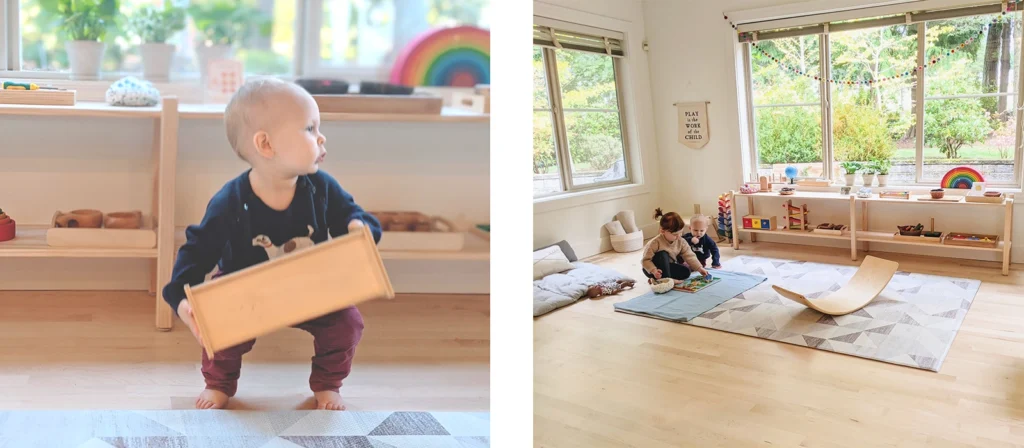

Receive a free catalog and custom layout to help you design your ideal classroom easily.
11. Recommended Montessori Product Suppliers
To successfully implement the Montessori Method at home, it is essential to use the right tools and materials. Below are some highly recommended Montessori product suppliers that offer high-quality materials for parents looking to enhance their child’s learning experience.
12.1 TOP Montessori
TOP Montessori provides many Montessori method toys and materials that support children’s independent learning. From didactic materials in Montessori method to sensory materials, TOP Montessori’s products are designed to encourage children to explore and learn at their own pace.
12.2 Xiha Montessori
Xiha Montessori specializes in Montessori-based products, including toys, learning tools, and educational kits. Their products are designed to enhance a child’s development through hands-on learning, making them perfect for incorporating Montessori principles at home.
12.3 Nienhuis Montessori
Nienhuis Montessori is known for offering a vast array of Montessori method materials, including specialized tools for early childhood education. Their collection includes well-crafted, durable products that align with the Montessori Method’s emphasis on practical life and sensorial development.
12.4 Lovevery
Lovevery offers Montessori-inspired play kits that cater to various developmental stages. Their monthly kits are filled with educational toys designed for hands-on play, supporting children’s cognitive, emotional, and motor development through sensorial activities Montessori method.
12.5 Bambini Montessori Materials
Bambini Montessori provides a variety of materials that promote independent learning, from puzzles and educational kits to Montessori method practical life tools. Their products are crafted to foster creativity, problem-solving, and critical thinking.
12.6 Winning Kidz
Winning Kidz offers Montessori-approved toys and materials that encourage learning through play. With products designed to meet the developmental needs of children, Winning Kidz provides a great selection of Montessori method research-based materials.
Choosing the right suppliers ensures your home is equipped with Montessori-approved materials that enhance your child’s learning experience.
12. Autism and Montessori Method
The Montessori Method can be highly beneficial for children with autism. The individualized approach, sensory integration, and focus on independence make it an ideal educational method for supporting autistic children.
13.1 Individualized Learning
Montessori’s emphasis on tailoring learning experiences to each child’s unique needs aligns perfectly with the needs of children on the autism spectrum.
13.2 Sensory Integration
Montessori classrooms’ hands-on materials and sensory-rich environment help autistic children integrate sensory experiences and enhance their cognitive skills.
13.3 Self-Directed Learning
By fostering independence and encouraging self-direction, Montessori helps autistic children develop confidence and responsibility for their learning.
13.4 Natural Social Interaction
Montessori classrooms often include mixed-age groups, allowing children to engage in natural, peer-based social interactions, which can benefit autistic children.
13.5 Practical Life Skills
Focusing on practical life skills helps autistic children develop daily living skills, promoting independence and self-care.
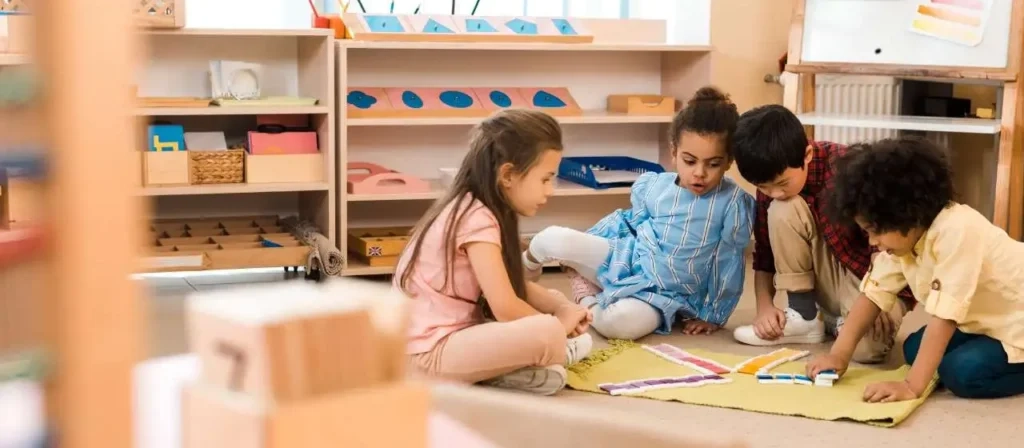
FAQs
- Does the Montessori method work? Yes, it has widely fostered independence, creativity, and a lifelong love of learning.
- Why is the Montessori method successful? Montessori is successful because it respects the child’s natural development and offers self-directed learning in a prepared environment.
- How is the Montessori method used today? Montessori is used in schools worldwide, from early childhood to adolescent education, and is increasingly incorporated into home learning environments.
- What are the goals of the Montessori method? The goals are to foster independence, develop critical thinking, and cultivate a love of learning.
- What are the key elements of the Montessori method? Key elements include self-directed learning, respect for the child, hands-on materials, and individualized instruction.
Conclusion
The Montessori Method provides an innovative and child-centered approach to education that fosters independence, creativity, and self-reliance. Its focus on practical life skills, individualized learning, and hands-on experiences helps children develop a deep love for learning and prepares them for lifelong success.
By applying Montessori principles at home and understanding the method’s benefits, parents can create a supportive environment that nurtures the child’s growth and development.







